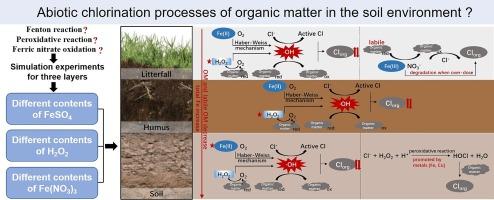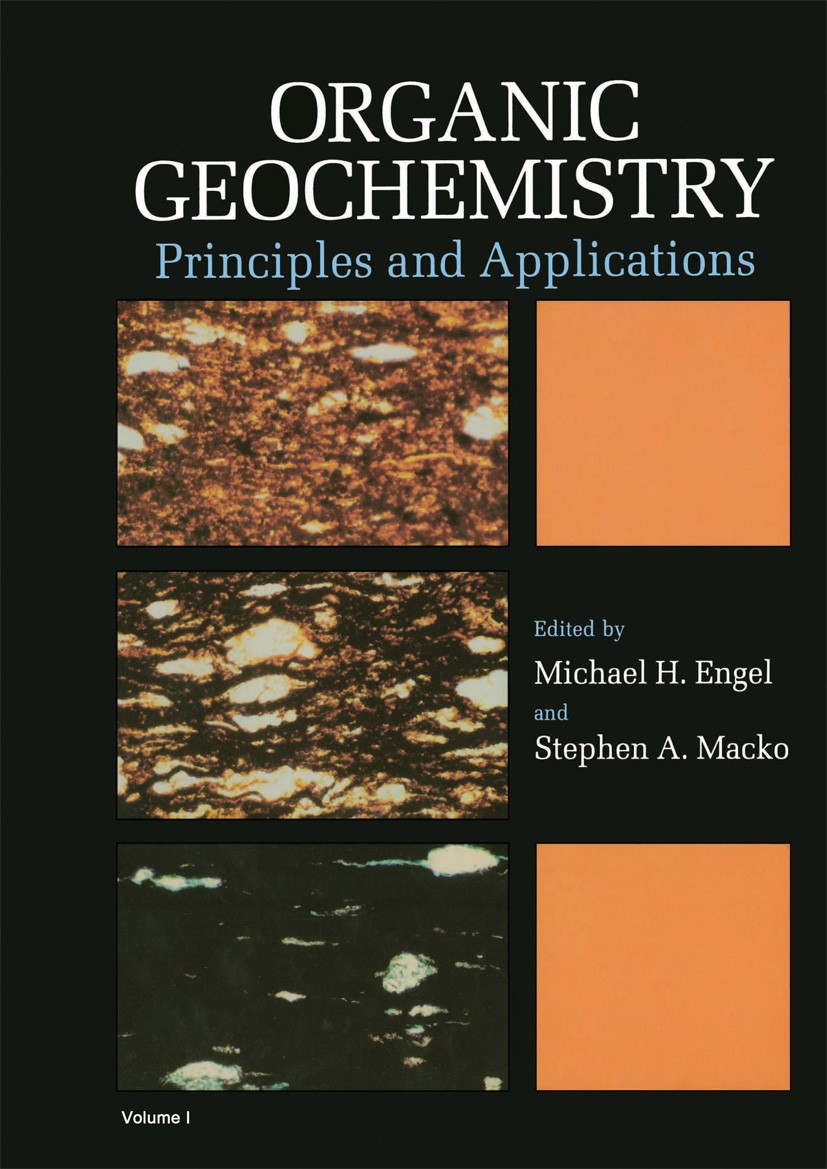土壤环境中有机物的非生物氯化:模拟研究
IF 2.6
3区 地球科学
Q2 GEOCHEMISTRY & GEOPHYSICS
引用次数: 0
摘要
有机物的氯化是自然发生的,也是氯循环的重要组成部分。为了研究土壤环境中经常存在的无机氧化剂(Fe(NO3)3、H2O2 和羟基自由基 (-OH))促进土壤环境中氯化有机物合成的可能性,我们收集了落叶、腐殖质和土壤(0-20 厘米),并将其用于实验室模拟实验。结果表明,这些无机氧化剂可能会促进氯化有机物的合成,但由于适合的反应环境不同,其影响也不同。降尘对氯化反应最为敏感,这可能是由于降尘中存在大量易溶有机物,而氯化过程则受到降尘中 Cl- 含量的限制。羟基自由基对所评估的三种材料显示出双重效应(产生或降解氯化有机物),这种效应受 -OH 浓度和有机物稳定性的控制,双重效应按垃圾堆落、腐殖质、土壤的顺序排列。由于有机物成分易变,Fe(NO3)3 介导的有机物氯化反应只在垃圾堆中明显,而 H2O2 在产生氯化有机物时引起的过氧化反应只在土壤中明显,这很可能是由于土壤中存在金属,促进了这一过程。这项研究通过验证无机氧化剂可能在自然土壤环境中介导有机物的非生物氯化过程,从而揭示了氯的循环。本文章由计算机程序翻译,如有差异,请以英文原文为准。

Abiotic chlorination of organic matter in the soil environment: A simulation study
Chlorination of organic matter occurs naturally and is an important part of the chlorine cycle. To investigate the likelihood that inorganic oxidants, (Fe(NO3)3, H2O2, and hydroxyl radicals (·OH), frequently present in soil environments, could promote the synthesis of chlorinated organic matter in the soil environment, litterfall, humus, and soil (0–20 cm) were collected and used in laboratory based simulation experiments. Results indicate that these inorganic oxidants might promote the synthesis of chlorinated organic matter, but their impact varied due to varying suitable reaction circumstances. Litterfall was the most sensitive to chlorination, likely caused by the presence of abundant amounts of labile organic matter, and the chlorination process was limited by its Cl− level. Hydroxyl radicals showed a dual effect (producing or degrading chlorinated organic matter) on the three materials assessed, which was controlled by both ·OH concentration and the stability of organic matter, and the dual effect was evident in order of litterfall > humus > soil. The Fe(NO3)3-mediated chlorination of organic matter was only significant in litterfall due to its labile organic matter composition, while the peroxidative reaction caused by H2O2 in the producing chlorinated organic matter was only obvious in soil, most likely due to the presence of metals, facilitating the process. Combined this study sheds light on the chlorine cycle by verifying that inorganic oxidants might mediate abiotic chlorination of organic matter in a natural soil environment.
求助全文
通过发布文献求助,成功后即可免费获取论文全文。
去求助
来源期刊

Organic Geochemistry
地学-地球化学与地球物理
CiteScore
5.50
自引率
6.70%
发文量
100
审稿时长
61 days
期刊介绍:
Organic Geochemistry serves as the only dedicated medium for the publication of peer-reviewed research on all phases of geochemistry in which organic compounds play a major role. The Editors welcome contributions covering a wide spectrum of subjects in the geosciences broadly based on organic chemistry (including molecular and isotopic geochemistry), and involving geology, biogeochemistry, environmental geochemistry, chemical oceanography and hydrology.
The scope of the journal includes research involving petroleum (including natural gas), coal, organic matter in the aqueous environment and recent sediments, organic-rich rocks and soils and the role of organics in the geochemical cycling of the elements.
Sedimentological, paleontological and organic petrographic studies will also be considered for publication, provided that they are geochemically oriented. Papers cover the full range of research activities in organic geochemistry, and include comprehensive review articles, technical communications, discussion/reply correspondence and short technical notes. Peer-reviews organised through three Chief Editors and a staff of Associate Editors, are conducted by well known, respected scientists from academia, government and industry. The journal also publishes reviews of books, announcements of important conferences and meetings and other matters of direct interest to the organic geochemical community.
 求助内容:
求助内容: 应助结果提醒方式:
应助结果提醒方式:


